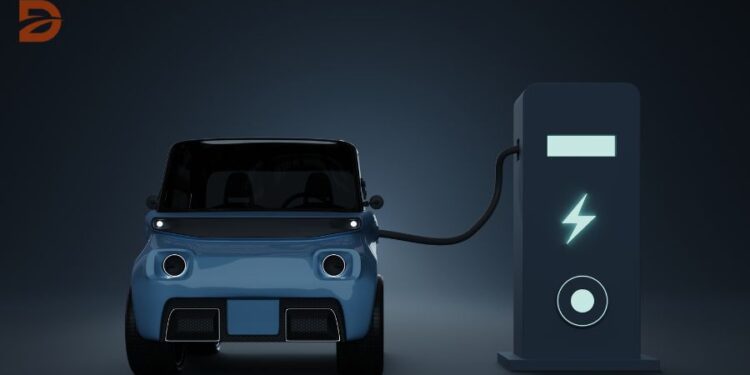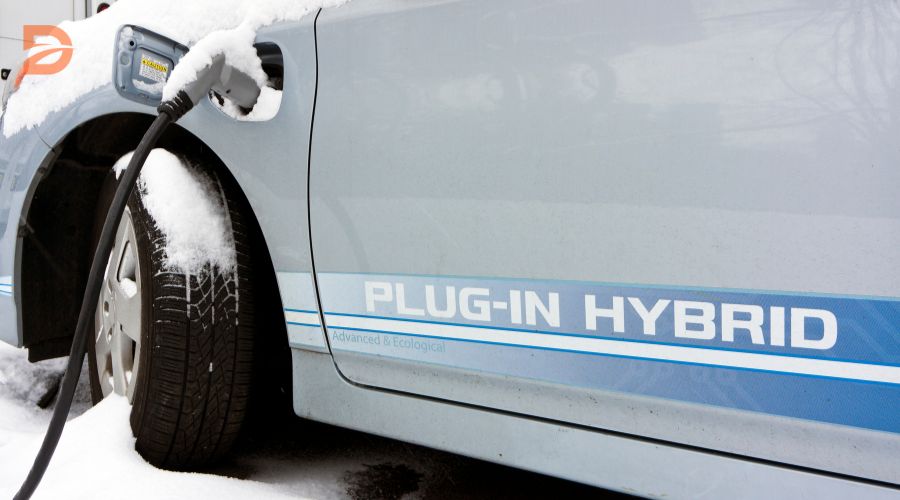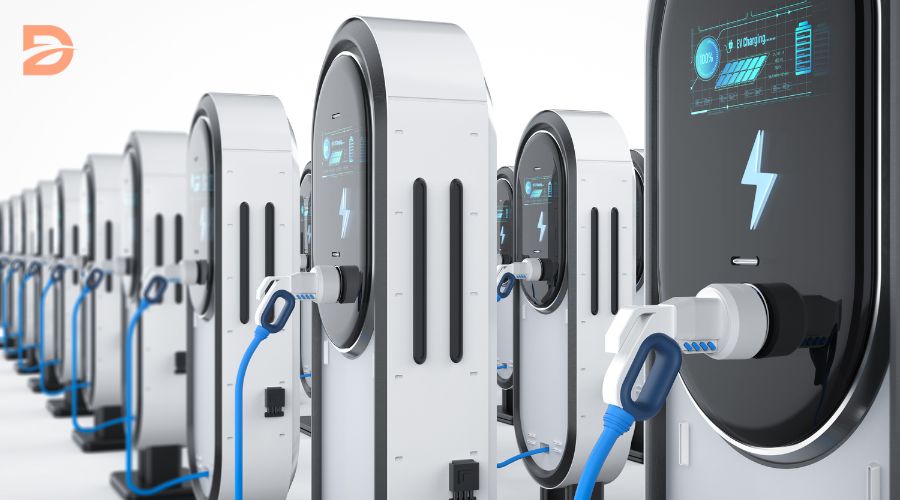Did you know that the average price difference between hybrid cars and conventional gasoline vehicles is around $1,300? This surprising statistic highlights the growing affordability of eco-friendly transportation options. As the hybrid vehicle market continues to evolve, more and more consumers are considering these fuel-efficient cars as a viable alternative to traditional gas-powered models.
In this comprehensive article, we’ll explore the latest advancements in hybrid vehicle technology, including the rising popularity of plug-in hybrid electric vehicles (PHEVs). We’ll delve into how PHEVs work, the advantages they offer, the costs associated with ownership, and the key factors to consider before making a purchase. Additionally, we’ll highlight some of the top PHEV models recommended by Consumer Reports, empowering you to make an informed decision about whether a hybrid is the right choice for your driving needs and budget.
Key Takeaways:
- The average price difference between hybrid and conventional gasoline vehicles is around $1,300.
- New hybrid purchases may qualify for federal tax credits ranging from $250 to $3,400.
- Hybrids achieve gas mileage 20% to 35% higher than conventional cars.
- Hybrids tend to hold their value better than gasoline cars due to fuel efficiency and eco-friendly technology.
- Hybrid vehicles utilize regenerative braking technology, leading to significant savings on brake replacements.
Understanding Plug-in Hybrid Electric Vehicles (PHEVs)
Plug-in hybrid electric vehicles (PHEVs) are a unique type of hybrid car that offers the best of both worlds – the electric-only driving range of an electric vehicle (EV) combined with the extended range and flexibility of a traditional gas-powered car. PHEVs can be recharged by plugging into an electrical outlet, allowing them to operate solely on electricity for short distances before seamlessly transitioning to a gas-powered engine for longer trips.
How PHEVs Work
The key difference between PHEVs and standard hybrid electric vehicles (HEVs) is the larger battery pack and plug-in charging capability. PHEVs generally have battery packs ranging from 15 to 60 miles of electric-only driving range, significantly more than the typical HEV. This allows drivers to complete many daily commutes and errands using just electricity, reducing both fuel consumption and emissions. When the battery is depleted, the gas engine automatically kicks into power the vehicle, providing the same flexibility as a conventional hybrid.
Advantages of PHEVs
- Improved fuel efficiency and cost savings on gas for drivers who can take advantage of the electric-only range
- Reduced emissions and environmental impact, especially when charged with renewable energy
- Access to federal and state tax credits and incentives to offset the higher upfront costs
- Convenience of refueling at home or at public charging stations
Overall, PHEVs represent an important step in the transition to more sustainable transportation, offering consumers a versatile option that combines the benefits of electric and traditional hybrid vehicles.
Hybrid vehicles, fuel-efficient cars: Are They Cost-Effective?
Upfront Costs
When it comes to the upfront costs of PHEV (Plug-in Hybrid Electric Vehicle) and hybrid vehicles, the initial price tag can be higher than traditional gas-powered cars. This is largely due to the advanced technology and components that go into these fuel-efficient models. However, the cost differential has been decreasing over time, thanks to federal tax credits and state-level incentives that help offset the additional PHEV pricing.
Ongoing Costs
While the upfront costs of PHEVs and hybrids may be higher, the potential savings on fuel and maintenance expenses over the long run can make them a cost-effective choice. Studies have shown that PHEVs cost around $4,600 to maintain over their lifetime, compared to $9,200 for traditional gas-powered cars. This is because PHEVs have fewer moving parts, and electricity is typically cheaper than gasoline.
However, the true cost-effectiveness of a PHEV or hybrid vehicle depends on several factors, including driving habits, access to home charging, and the intended length of ownership. If PHEV owners don’t take advantage of the electric-only driving mode and rely more heavily on the gas engine, the potential savings may not be fully realized.
When evaluating the cost-effectiveness of a PHEV or hybrid, it’s essential to consider both the upfront and ongoing costs, including factors like PHEV fuel and electricity costs, maintenance expenses, and the total cost of ownership. By carefully weighing these factors, consumers can make an informed decision that aligns with their budget and driving needs.
Factors to Consider Before Buying a PHEV
When it comes to purchasing a plug-in hybrid electric vehicle (PHEV), it’s crucial to carefully evaluate your driving habits and charging accessibility. These factors can significantly impact the suitability and cost-effectiveness of a PHEV for your individual needs.
Driving Habits
PHEVs are well-suited for drivers who primarily make short trips within the electric-only range, typically 20 to 40 miles. However, those who regularly exceed the battery’s range or live in colder climates may not see the same level of fuel and emissions savings. The PHEV’s electric range requirements and the impact of cold weather on the battery’s performance should be carefully considered.
Charging Accessibility
The availability and convenience of charging, particularly at home, play a vital role in the PHEV’s real-world performance and cost-savings potential. While public charging infrastructure is expanding, PHEVs are generally not equipped for rapid charging like fully electric vehicles, making home charging setups the most practical and efficient solution for many PHEV owners. The PHEV charging requirements should be thoroughly understood to ensure a smooth ownership experience.
| Factors | Considerations |
|---|---|
| PHEV Suitability | Driving habits, commuting needs, electric range requirements |
| Charging Accessibility | Home charging setup, public charging infrastructure, PHEV charging requirements |
| Cold Weather Impact | Effect on electric range and battery performance |
By carefully evaluating these factors, prospective PHEV buyers can make an informed decision and ensure the vehicle aligns with their driving needs and lifestyle.
Top PHEV Models and Consumer Reports Recommendations
As the market for plug-in hybrid electric vehicles (PHEVs) continues to grow, consumers are faced with a wealth of options to choose from. Fortunately, the experts at Consumer Reports have provided valuable insights to help navigate this increasingly competitive landscape.
According to the latest Consumer Reports PHEV reviews, several models have emerged as standouts in the category. The Toyota RAV4 Prime, for instance, was praised for its impressive all-electric range of up to 42 miles and seamless transition between electric and gasoline power. The Hyundai Tucson Plug-in Hybrid also garnered attention for its user-friendly features and respectable fuel economy.
| Model | All-Electric Range | Fuel Economy (MPG) | Consumer Reports Rating |
|---|---|---|---|
| Toyota RAV4 Prime | 42 miles | 40 MPG | Excellent |
| Hyundai Tucson Plug-in Hybrid | 33 miles | 35 MPG | Very Good |
| Kia Niro Plug-in Hybrid | 26 miles | 44 MPG | Excellent |
| Mitsubishi Outlander Plug-in Hybrid | 24 miles | 27 MPG | Good |
Notably, the Kia Niro Plug-in Hybrid and Mitsubishi Outlander Plug-in Hybrid also received high marks from Consumer Reports, showcasing the diverse range of top-rated PHEVs available to consumers.
As the industry continues to evolve, it’s clear that the top-performing PHEV models are offering drivers a compelling blend of efficiency, technology, and practicality. By staying informed on the latest Consumer Reports PHEV reviews, consumers can make more informed decisions and find the best plug-in hybrid vehicle to suit their needs.
Conclusion
As the article has explored, the latest advancements in plug-in hybrid electric vehicle (PHEV) technology have made these eco-friendly transportation options increasingly compelling for consumers. The seamless integration of electric and gasoline power sources in hybrid vehicles has redefined energy efficiency, leading to significant improvements in fuel economy and reduced emissions.
When evaluating a PHEV purchase, it’s crucial to carefully consider factors such as driving habits, charging accessibility, and long-term cost savings. For those whose commutes and lifestyle align well with the capabilities of a PHEV, these vehicles can offer a sustainable and cost-effective solution, with the potential for substantial fuel savings and a smaller environmental footprint.
As the range of PHEV models continues to expand and technology advances, consumers have a growing array of choices when it comes to selecting the right hybrid vehicle to meet their needs. By exploring the latest PHEV offerings and assessing their circumstances, drivers can make an informed decision that balances their transportation requirements with the benefits of eco-friendly hybrid technology.
FAQ
What are plug-in hybrid electric vehicles (PHEVs) and how do they work?
PHEVs are a type of hybrid vehicle that can be plugged in to charge their battery, allowing them to operate in electric-only mode for a certain distance before switching to a gas-powered engine. This provides the benefits of electric driving for short trips while still maintaining the flexibility of a conventional hybrid for longer journeys.
What are the key advantages of owning a PHEV?
The main advantages of PHEVs include significant reductions in emissions and fuel consumption compared to traditional gas-powered vehicles, especially for drivers who can take advantage of the electric-only range for their daily commutes. PHEVs can also save owners money on fuel and maintenance costs over the long run.
Are PHEVs more expensive than traditional gas-powered vehicles or standard hybrids?
PHEVs typically have higher upfront purchase prices than standard hybrids or gas-only vehicles. However, the cost differential has been decreasing, partly due to new federal tax credits and state-level incentives that can help recoup some of the additional PHEV purchase price.
How do the ongoing costs of owning a PHEV compare to other vehicle types?
PHEVs can save owners money on fuel and maintenance costs over time, as electricity is typically cheaper than gasoline and PHEVs have fewer moving parts that require servicing. However, the true cost-effectiveness of a PHEV depends on driving habits and whether the owner takes full advantage of the electric-only driving mode.
What factors should consumers consider when evaluating a PHEV purchase?
Key factors include driving habits, the availability and convenience of charging, particularly at home, and the intended length of ownership. Consumers should carefully consider their commute distance, frequency of longer trips, and exposure to cold weather conditions, as these can significantly impact the usability and cost-effectiveness of a PHEV.
Which PHEV models are recommended by Consumer Reports?
The article highlights some of the top-performing PHEV models on the market, based on recommendations from Consumer Reports, providing an overview of the key features, specifications, and assessments of these PHEV options.









